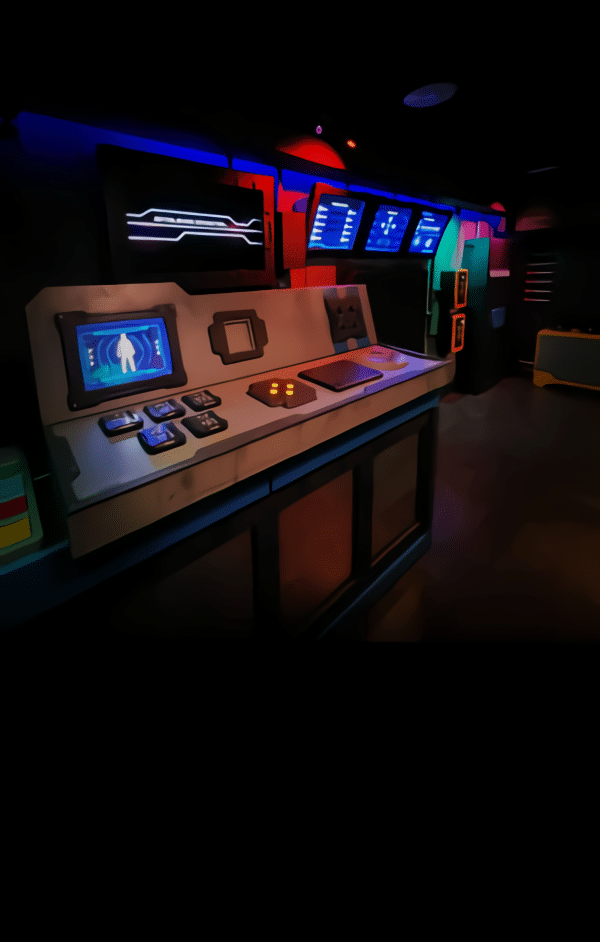Corporate groups looking for immersive team-building experiences often turn to escape rooms because they blend challenge, collaboration, and fun in a controlled environment. An escape room nyc venue in Midtown can not only accommodate corporate groups but design the experience to align with goals like communication improvement, leadership testing, and creative problem solving. This article walks through how such venues support corporate groups, how to plan, game selection strategies, logistics, and maximizing the outcome.
Benefits of corporate team-building in an escape room setting
Escape rooms are uniquely suited for corporate team-building because they compress a wide array of soft-skill development into a 60–90 minute session. Teams must communicate clearly to share clues, delegate tasks based on individual strengths, and manage time pressure—all without overt instruction. These scenarios reveal natural leadership emergence, collaboration bottlenecks, and how teams handle ambiguity.
Beyond skills diagnostics, escape rooms create a shared narrative. Completing a mission together—whether it’s surviving “End of Days A/B,” unraveling the mysteries of “Hydeout,” or decoding “Carbon: 3708”—builds rapport in a way that traditional workshops often fail to achieve. Participants leave with a memorable story, not just slides. They also experience immediate feedback: success or failure is visible, prompting reflection on what worked, what didn’t, and how they adapted.
For hybrid or distributed companies, escape rooms serve as an in-person anchor—an event that translates abstract corporate values (trust, accountability, creativity) into concrete, embodied experience. When teams discuss a solution after the game, the learning “sticks” because it’s tied to a lived, emotionally engaging activity.
Customization and private booking options for corporate groups
Corporate events require flexibility. Midtown escape room venues typically offer private bookings so a company has exclusive use of one or more game experiences, ensuring confidentiality, tailored pacing, and group cohesion. Booking privately allows organizers to choose which game(s) best match their team’s size and objectives—whether a high-intensity puzzle like “Carbon: 3708” for smaller agile squads or the richer narrative layers of “End of Days” for larger cross-functional groups.
Customization often extends beyond reservation: pre-game briefings can be adapted to include corporate framing (e.g., “today’s mission mirrors how we approach cross-department alignment”), welcome messaging, or subtle branding in the briefing room. Some venues will work with organizers to sequence multiple rooms or stagger groups to allow debriefs between play sessions.
Group size planning is critical. Most escape room games are optimized for teams of 4–8 players; corporate organizers can split larger departments into parallel teams, turning the event into a mini internal competition or aggregate learning session. Facilitators can also suggest combinations to ensure mixed-department pairings, encouraging fresh collaboration across silos.
Logistics and scheduling for corporate events
To ensure the smooth execution of a corporate escape room event, careful scheduling and logistics planning are essential. Corporate planners should start by confirming the number of participants, preferred dates/times (midweek late mornings or early afternoons often minimize disruption), and any accessibility needs. Midtown locations are typically accessible by public transit, so including clear arrival instructions in pre-event communications reduces start-time friction.
A recommended flow: arrival and check-in (10–15 minutes), briefing (5–10 minutes), game play (usually 60 minutes), and facilitated debrief or informal networking afterward (15–30 minutes). Buffering time between sessions avoids overlaps and gives staff time to reset rooms.
Corporate groups should designate a point person for coordination on the company side who liaises with the venue regarding final headcount changes, dietary restrictions if refreshments are included, and any special requests (e.g., rah-rah intro, photo opportunity). If using multiple games or rotating teams, a run sheet with staggered start times keeps everything synchronized. Providing participants with a brief “what to expect” email ahead of time (attire suggestions, arrival window, purpose of the activity) increases engagement and reduces no-shows or confusion.
Game selection strategy for varied corporate objectives
Choosing the right game—or combination of games—can align the escape room experience with specific corporate goals. Each title offers a different flavor:
-
End of Days A/B: These likely present complex narratives with layered puzzles. They suit groups focused on strategic thinking, sequencing tasks, and collective meaning-making. The dual versions can allow split teams to compare approaches and later reconvene for reflection.
-
Hydeout: Often themed around hidden identities or secret missions, this game encourages attention to detail, lateral thinking, and rapid information synthesis. Ideal for teams that need a boost in cross-functional communication and recognizing how small inputs fit into larger systems.
-
Carbon: 3708: With a title suggesting technical or futuristic stakes, this game can simulate high-pressure problem solving under constraints—helpful for innovation teams, product development groups, or crisis response training.
Smart corporate planners match the game’s cognitive load and theme to their team’s culture. For example, newly formed teams may start with a slightly more guided experience to build trust, while veteran groups looking to shake up routine could tackle a more challenging narrative. Offering a mix of game types across a half-day event lets teams experience different modes of collaboration and compare internal dynamics.
Facilitated debrief and translating experience into actionable insight
The raw experience of an escape room is valuable, but structured reflection turns fun into growth. Corporate groups benefit when the venue or a hired facilitator leads a post-game debrief. Key debrief components include: what communication patterns emerged, how task delegation played out, what assumptions were made and challenged, and how the team responded to unexpected twists.
A useful debrief framework:
-
What happened? (Descriptive) – Team recounts their sequence.
-
So what? (Interpretive) – Identify strengths and breakdowns: who naturally took leadership, where did information bottleneck?
-
Now what? (Applied) – Translate those observations into workplace adjustments: “We realized we lack a clear signal for shifting priorities” or “Cross-department updates could follow a concise structure to avoid redundancy.”
Providing a one-pager summary of insights after the event gives longevity to the learning. Some corporate groups use themes from the debrief in internal presentations, performance reviews, or as kickoff material for new projects. Embedding the escape room experience into broader organizational development increases return on investment.
Tips for maximizing the corporate event’s return
To get more out of the escape room event beyond the immediate play, corporate organizers can layer in complementary elements:
-
Pre-game framing: Share the goals (e.g., “Today’s mission will help us practice rapid decision-making under ambiguity”) so participants interpret their behavior with purpose.
-
Cross-team pairing: Instead of keeping departmental teams intact, mix people from different functions to surface hidden dependencies and foster new lines of communication.
-
Follow-up accountability: Use insights from the debrief to set one or two “team improvement sprints” afterward. For instance, a leadership team might commit to clearer delegation protocols based on what was learned.
-
Documentation and storytelling: Capture photos (with participant consent), quotes from debriefs, and mini case studies to highlight investment in team development in internal newsletters or onboarding material.
-
Recognition: Celebrate creative problem solving or moments of breakthrough that emerged during the game—not with external rewards but internal acknowledgement, reinforcing the behaviors you want repeated.
Conclusion
Yes, escape room NYC venues in Midtown can robustly accommodate corporate groups. Through private bookings, thoughtful game selection, logistical planning, and facilitated reflection, these experiences translate into practical team development outcomes. Whether the objective is improving communication, surfacing leadership, or simply strengthening interpersonal bonds, rooms like End of Days A/B, Hydeout, and Carbon: 3708 provide immersive, memorable platforms for growth. Corporate groups that prepare intentionally, align the narrative to their goals, and follow up on insights leave with more than just a fun story—they leave with actionable understanding of how they work together.
Frequently Asked Questions
Q: Can escape room NYC venues accommodate corporate groups?
A: Yes. Midtown escape room venues provide private bookings, flexible group sizing, and tailored experiences that suit corporate team-building goals. They can accommodate multiple teams, offer game selection advice, and often support custom framing or debriefs to align the activity with organizational objectives.
Q: What is the ideal group size for a corporate escape room session?
A: Most games work best with 4–8 players to ensure everyone can participate without overcrowding the puzzle space. Larger departments can be split into parallel teams, with opportunities to compare approaches in a later debrief session.
Q: How far in advance should a corporate group book?
A: Corporate groups should book as early as possible, especially for desired dates and times (typically 2–4 weeks ahead), to secure private use of games and accommodate any customization such as themed briefings or staggered team rotations.
Q: Can different game types be combined for one event?
A: Yes. Combining multiple games—such as pairing a narrative-rich mission like End of Days with a more rapid puzzle experience like Hydeout—allows teams to confront varied challenge types and compare how their collaboration shifts across contexts.
Q: What should participants know before arriving?
A: Participants should come on time, wear comfortable clothing, and be prepared to communicate and collaborate. A pre-event email outlining purpose, arrival time, and any logistical notes helps set expectations. No prior escape room experience is required; the experience is designed to engage everyone.
Q: Are there structured takeaways provided after the game?
A: Many corporate groups opt for a facilitated debrief, either run by the venue or a hired facilitator, to extract insights. Some venues provide summary notes, and companies often build on those with internal follow-ups to reinforce learning.









